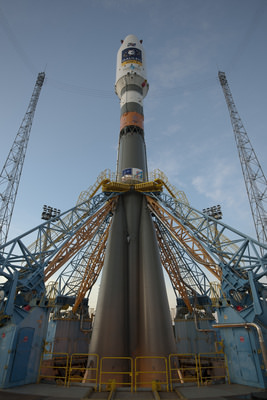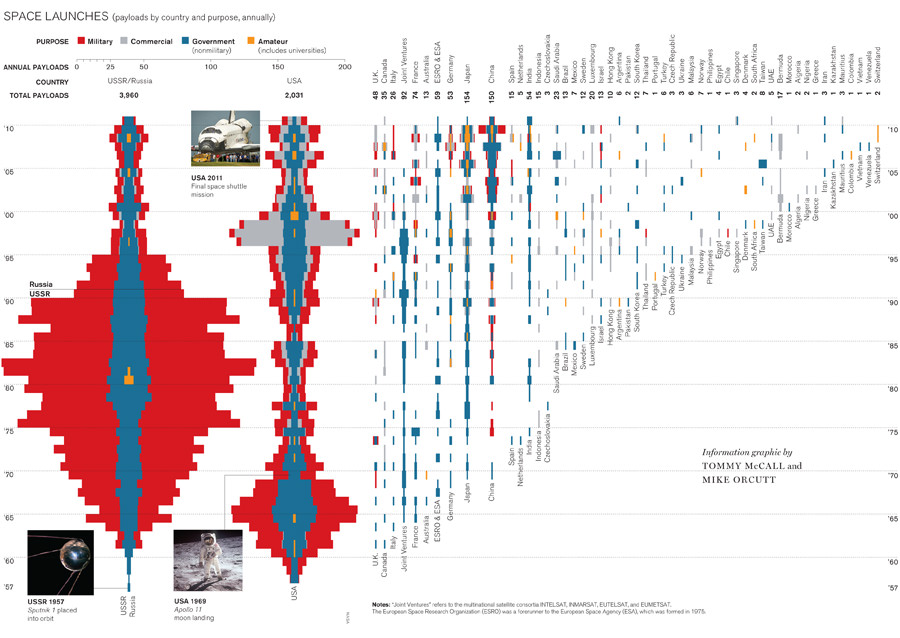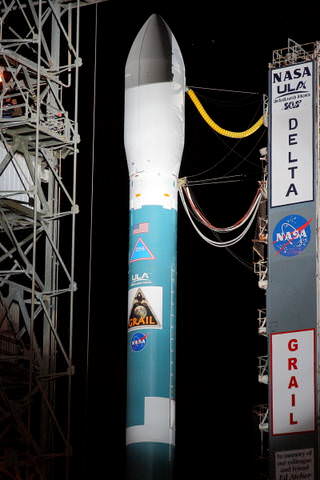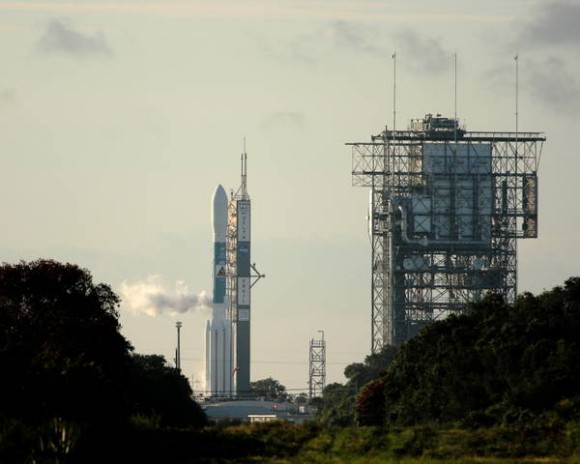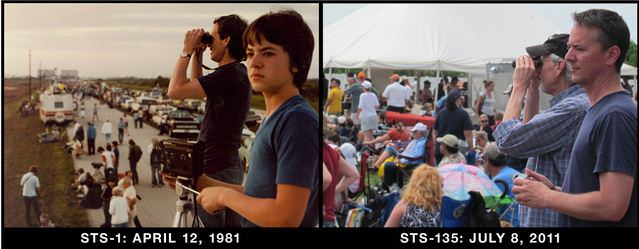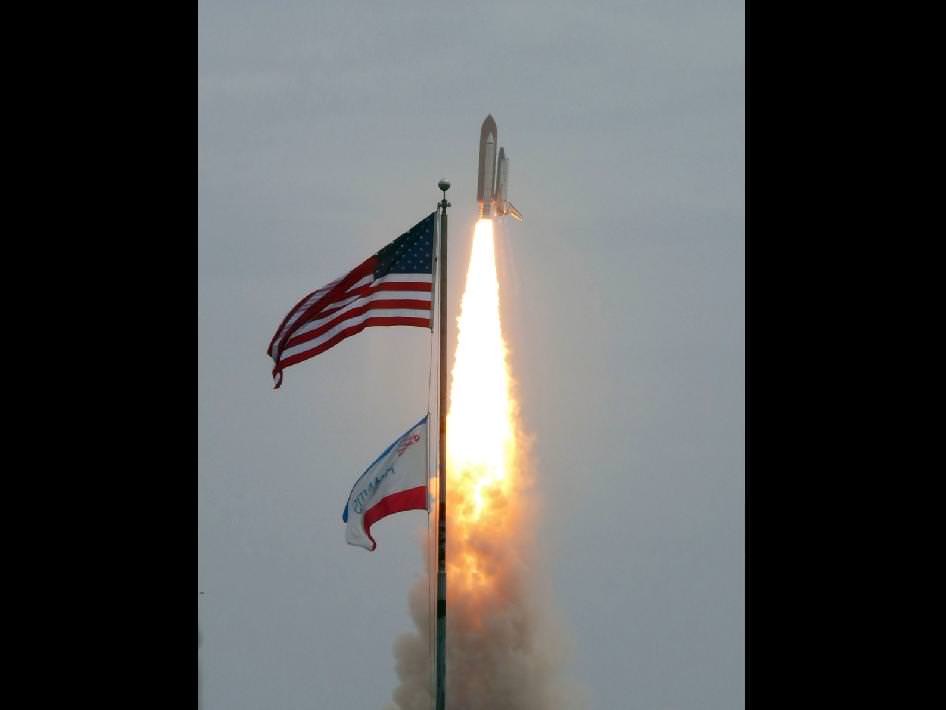[/caption]
Chris Bray and his father Kenneth attended the first space shuttle launch 30 years ago and even though they hadn’t seen any other launches in person since, they decided to make the journey to see the final launch to ‘bookend’ the shuttle program in their lives. Plus, they were able to take this great image of father and son at two shuttle launches, “the picture we waited 30 years to complete,” Chris Bray said.
Note the similar shirts and poses, as well as examples of the available technology of the day.
But their odyssey wasn’t without a bit of adventure!
“In addition to being astronomy buffs for as long as I can remember, Dad and I have been big fans and followers of the space program — including all the private endeavors,” Chris Bray told Universe Today. “We’ve only been to the two Shuttle launches. I live in NYC and he lives in NJ, so it’s not always the easiest and most convenient trip to make.”
Chris said that about a year ago when NASA started discussing the last missions, he and his father talked about how nice it would be to go to the last launch since they had attended the first.
“Dad was a jewelry designer and made some of the official shuttle pins for the early STS missions (like this one),” Chris said, “so that’s why we were down there for the first launch. We were lucky enough to get in the lottery for STS-135 and scored some tickets to the Astronaut Hall of Fame viewing site.”
“But we almost didn’t make it! Our flight out of Newark on Thursday the 7th was delayed 5 or so hours and we didn’t get to Orlando until about 2:30 am. On top of that, all the rental cars were gone and despite having a reservation for a car we had no transportation. We eventually were able to rent a 15 seat passenger van (the last available car) from a small rental company and drove straight to the site, bailing on our hotel.”
Chris said both he and his Dad are sad to see the program end, but at the same time excited about the next phase, whatever that might be.
Thanks to Chris for sharing the image with Universe Today.

